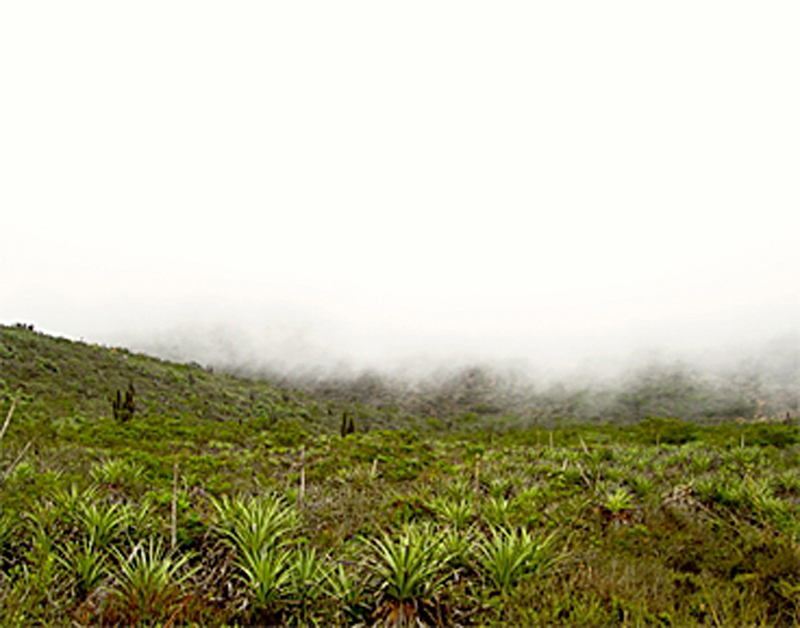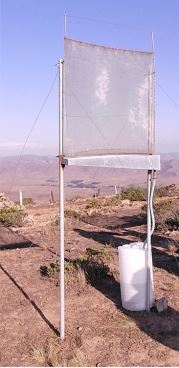Fog Collectors Could Ease Water Woes in Arid Lands

As arid regions of the world struggle to meet the water needs of growing populations, researchers are looking for nuanced ways to keep communities hydrated. Now, recent advancements in one low-tech technology may offer an inexpensive and abundant alternative to rainwater: fog harvesters.
Many countries with limited drinking water — such as Chile, Peru and Mexico — have experimented with some degree of fog collection for years. Now, MIT researchers and their colleagues in Chile have developed the first systematic study aimed at optimizing the efficiency of fog harvesting. Their findings appeared last month in the journal Langmuir.
Fog collectors generally consist of plastic mesh nets propped up on stakes. As foggy air blows through the mesh, water droplets gather along the mesh filaments, and then funnel into collection tanks below. [Watch Video of Fog Collector at Work]
This setup works well, but its effectiveness varies depending on the type of mesh used.
"The materials that have been used have been low-cost, readily available and durable," said Gareth McKinley, an MIT engineer and a co-author of the paper describing the new research. "What hadn't been done was a systematic study to show how good we could make this by bringing together fluid dynamics and surface chemistry to optimize the fog-collecting efficiency."
The team measured variations in water yield based on changes in the mesh-thread thickness, the size of the holes between the threads and the coating applied to the threads. They found that minimizing both the gap between the threads and thread size significantly increased the water yield, and settled on a thread thickness of about three times the width of a human hair. Anything thinner may produce more water, but would lack durability, McKinley said.
These improved measurements may increase water yield from current levels of several liters per square meter of mesh per day to more than 12 liters (about 3 gallons) per day, potentially fulfilling the water needs of large expanses of rural, arid Chile, where isolated communities have limited access to electricity and drinking water, McKinley said.
Get the world’s most fascinating discoveries delivered straight to your inbox.
Fog water is fairly pure and often safe to drink straight from the sky, because pollutants get left behind when water evaporates into the sky. Still, pollutants can get trapped in fog droplets, but the researchers have not detected dangerous quantities in the water they have collected in Chile. However, pollutants could be a more serious concern in more industrialized, water-stressed regions, such as heavily farmed areas of central California, where high levels of pesticides and other agricultural residues circulate through the air, said Peter Weiss, a professor of environmental toxicology at the University of California, Santa Cruz, who was not involved in the study.
The team next plans to deploy the new design in Chile to determine its durability and effectiveness in the field, and hopes to eventually help locals deploy the devices on larger scales.
Follow Laura Poppick on Twitter. Follow us @livescience, Facebook & Google+. Original article on LiveScience.com.




